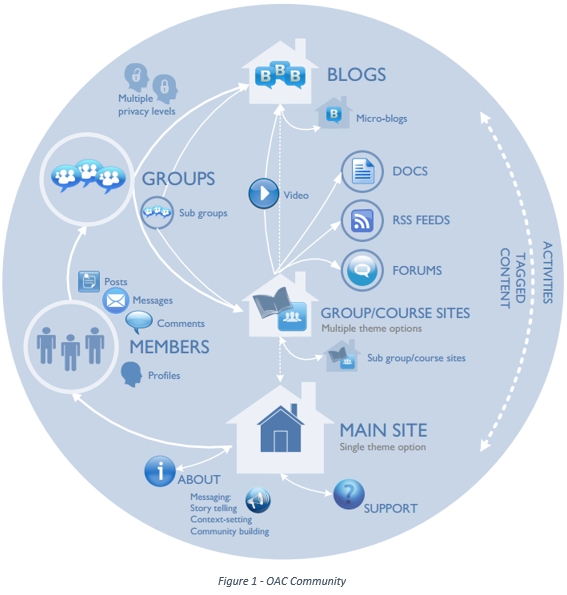The Online Academic Community (OAC) is an online platform that enables faculty, researchers, students and staff to communicate, collaborate and publish their work and interests. OAC provides online tools for blogging, digital portfolios, course sites, group sites, user profiles, forums and much more (Figure 1). The platform extends our existing educational technology stack by providing an open and flexible approach to a collaboration and communication.
The OAC platform is based on WordPress and incorporates a number of features, plugins and extensions for creating and publishing content including:
- Personal and academic blogs
- Content management with media integration
- Social media and RSS feed aggregators
- Professional themes
- Tiered content security
- Personalized profiles
- Course templates
- Automatic course enrolment
- University Systems centrally supported platform
Even though OAC is identified as an open platform, it does provide the option of allowing you to keep your published information public or private. In order to enhance security and privacy, as well as data ownership, OAC is locally hosted at the University of Victoria and therefore compliant with British Columbia privacy laws.
We are currency running an OAC pilot and expect that OAC will be released to campus in 2014. When released, it will serve our entire community including all researchers, faculty, staff, and students at the University of Victoria. As this is a central service, OAC is supported by University Systems who will provide blog and site provisioning, user account provisioning, as well as ongoing upgrades and maintenance. Technical assistance for OAC will be provided by the University Systems Computer Help Desk.
It is important to note that OAC cannot be used to publish official departmental sites, news and events releases; instead the Cascade Web Content Management System (CMS) and existing University systems and platforms are more appropriate for this purpose.
You can find a presentation about OAC by [clicking here]


